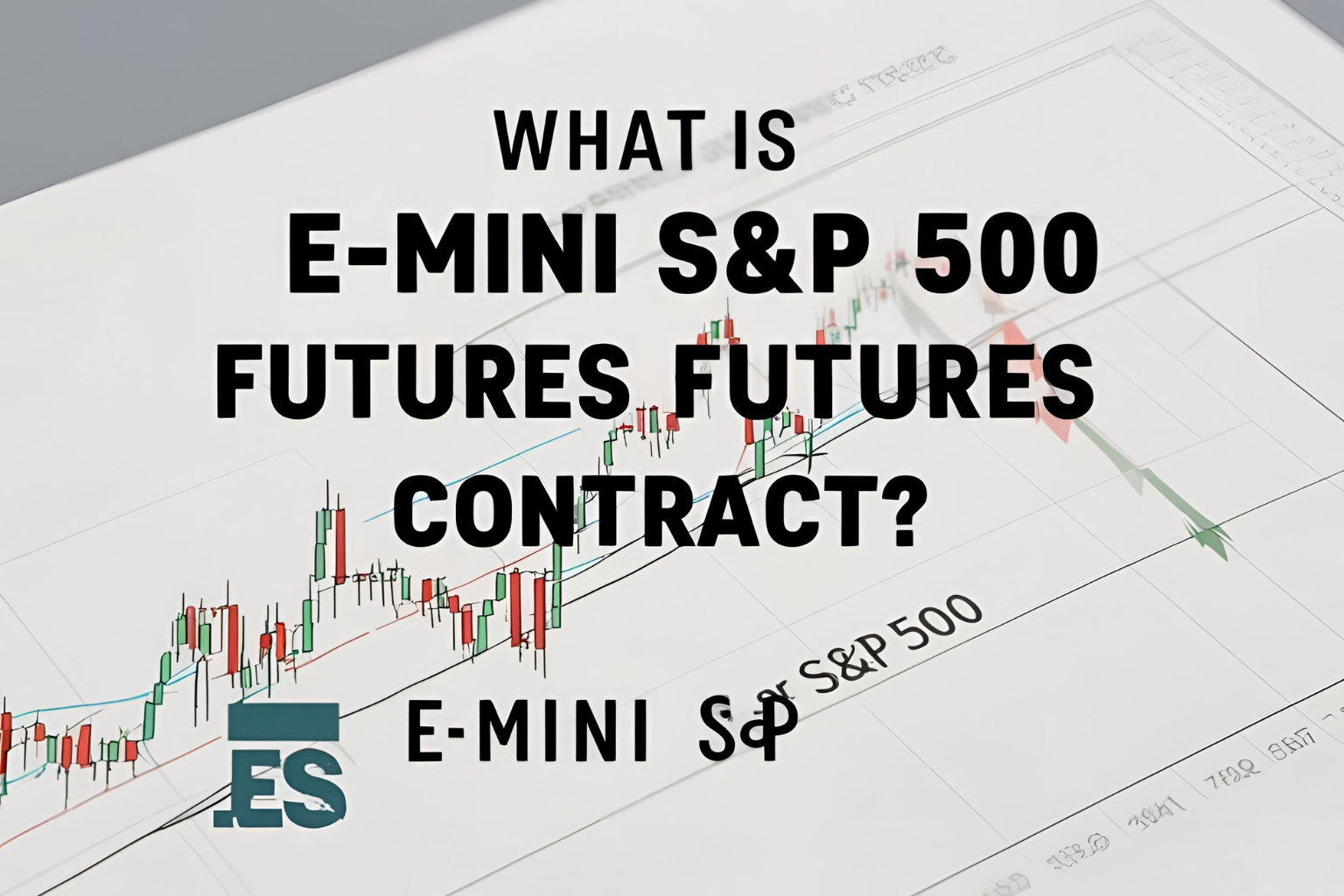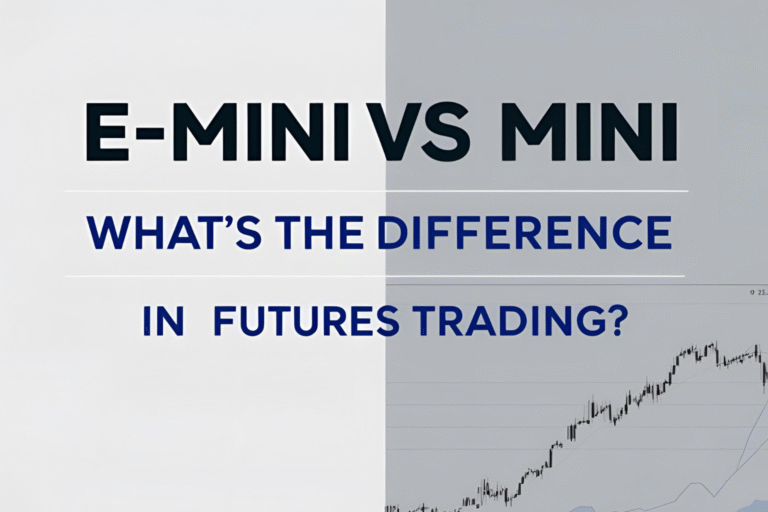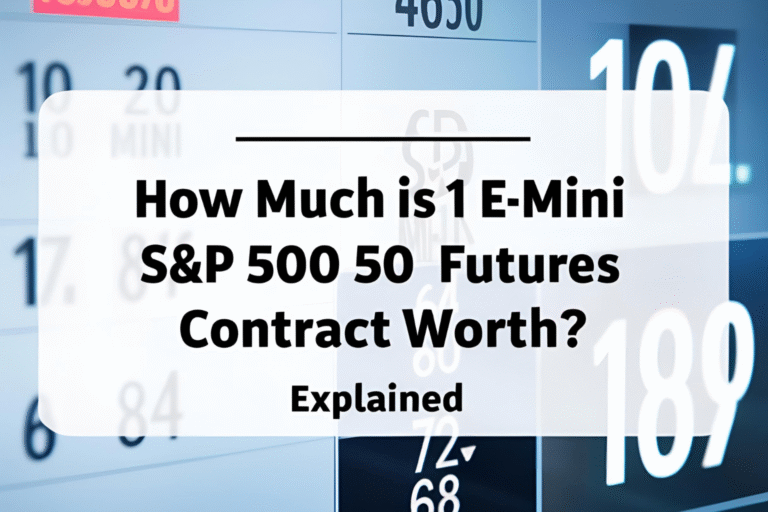What Is the E-mini S&P 500 Futures Contract?
The E-mini S&P 500 futures contract (symbol: ES) is one of the most actively traded futures contracts in the world. If you’re starting your journey into global trading from India, understanding this contract is essential.
This post explains everything you need to know about the E-mini S&P 500 contract—from its basics to its benefits and trading examples.
What Is the S&P 500 Index?
Before understanding the futures contract, let’s briefly look at the S&P 500 Index.
The Standard & Poor’s 500 (S&P 500) is a stock market index that includes 500 of the largest publicly traded companies in the U.S. It serves as a benchmark for the performance of the U.S. stock market and economy.
Some major companies in the S&P 500 include:
- Apple
- Microsoft
- Amazon
- Alphabet (Google)
- Tesla
What Is the E-mini S&P 500 Futures Contract?
The E-mini S&P 500 Futures (ES) is a derivative contract that allows traders to speculate on or hedge against future movements of the S&P 500 index.
- “E-mini” means the contract is a smaller version of the standard S&P 500 futures contract.
- “Futures” means it is an agreement to buy or sell the index at a future date at a predetermined price.
This contract is traded on the Chicago Mercantile Exchange (CME) and is fully electronic via the Globex platform.
Contract Specifications (ES)
| Feature | Detail |
|---|---|
| Symbol | ES |
| Exchange | CME |
| Tick Size | 0.25 index points |
| Tick Value | $12.50 per tick |
| Contract Size | $50 × S&P 500 Index |
| Trading Hours | Almost 23 hours/day (Sunday to Friday) |
| Margin | Varies by broker, typically $5,000–$15,000 |
Why Trade the E-mini S&P 500?
- High Liquidity
The ES contract is one of the most liquid instruments in the world. You can easily enter and exit positions. - Tight Spreads
Due to high volume, the bid-ask spread is narrow—ideal for day and swing traders. - 24-Hour Market Access
Indian traders can access the market during U.S. or overnight hours. - Volatility and Movement
The index has regular price swings, offering trading opportunities across timeframes. - Smaller Contract Size
It’s more affordable than full-size futures, making it beginner-friendly.
Real-Life Example
Let’s say the S&P 500 Index is trading at 4500.
1 ES contract is worth: 4500 × $50 = $225,000
If the index moves up 10 points:
- Profit = 10 points × $50 = $500 per contract
Similarly, a 10-point drop results in a $500 loss. Hence, managing risk is crucial.
How Indian Traders Can Access It
Indian citizens can trade the ES contract using international brokers under the Liberalized Remittance Scheme (LRS). Here’s how:
- Open a foreign trading account (e.g., Interactive Brokers India).
- Remit funds in USD through your bank under LRS.
- Trade via platforms like TWS, ThinkorSwim, or NinjaTrader.
- Monitor INR/USD conversion to track your account value accurately.
E-mini S&P 500 vs Micro E-mini
The Micro E-mini S&P 500 (MES) is a smaller version of the ES contract:
| Contract | Symbol | Multiplier | Tick Value |
|---|---|---|---|
| E-mini ES | ES | $50 | $12.50 |
| Micro E-mini | MES | $5 | $1.25 |
For beginners, Micro E-mini offers a cost-effective way to start.
Final Thoughts
The E-mini S&P 500 futures contract is an excellent gateway for Indian traders to participate in U.S. market trends. With lower capital needs and high liquidity, it offers real potential—provided you manage your trades wisely and use reliable tools.
FAQs
Q1. Is E-mini trading only for professional traders?
No. E-mini contracts are designed for retail traders and are accessible to beginners.
Q2. What’s the minimum account size to trade ES?
Most brokers recommend $5,000 to $10,000 for E-mini trading.
Q3. Is the E-mini S&P 500 available on NSE or BSE?
No. It’s listed on the Chicago Mercantile Exchange (CME) only.
Q4. Can I trade the E-mini S&P 500 on weekends?
Markets are closed from Friday evening to Sunday evening U.S. time, but open nearly 23 hours/day otherwise.
Q5. What’s the difference between ES and SPX?
ES is the futures contract. SPX is the cash index based on the S&P 500. They move in sync but have different uses.





